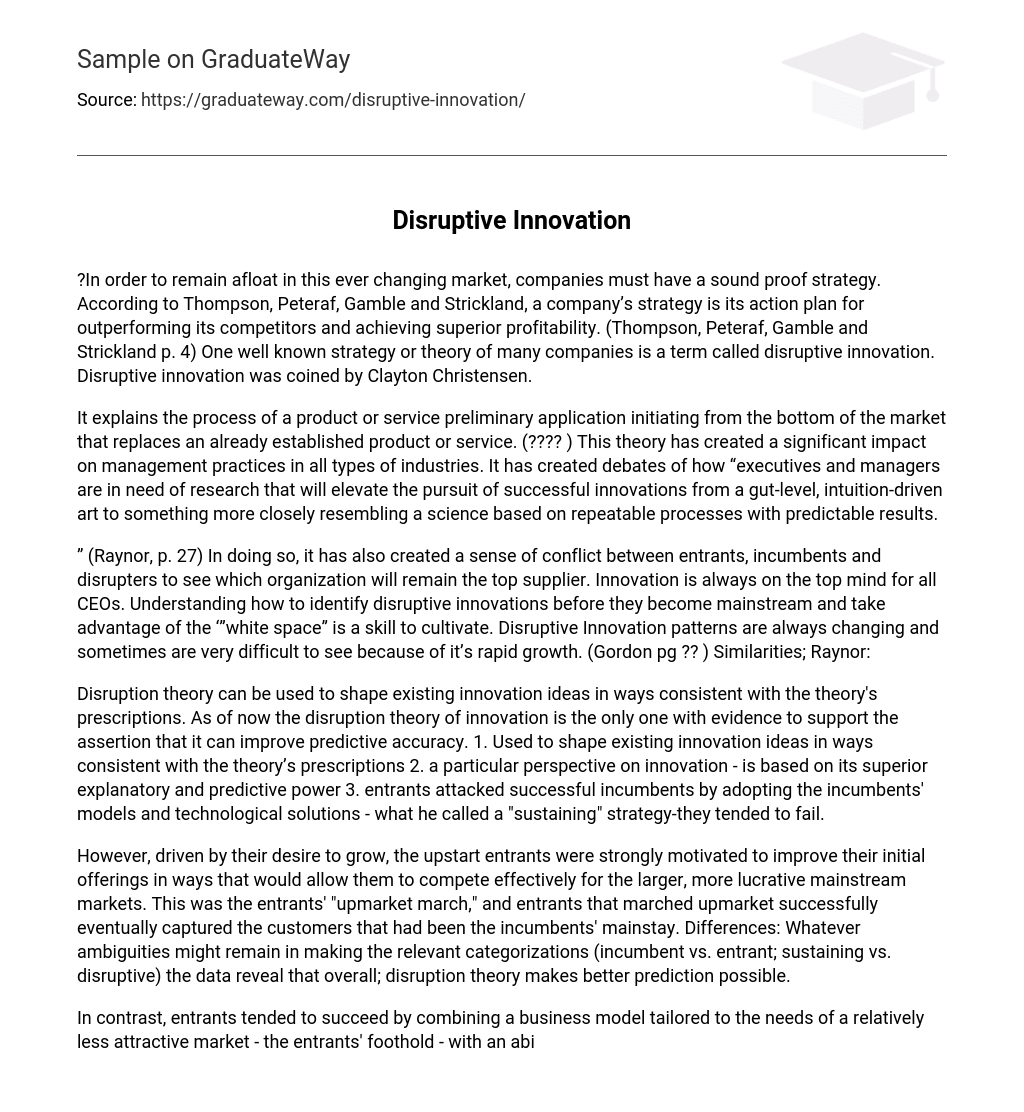In order to stay competitive and profitable in the constantly evolving market, companies must possess a strong and solid strategy. According to Thompson, Peteraf, Gamble, and Strickland (p. 4), a company’s strategy refers to its action plan aimed at surpassing competitors and attaining exceptional profitability.
Disruptive innovation is a well-known strategy or theory used by many companies. It was coined by Clayton Christensen and refers to the process in which a product or service initially enters the market from the bottom and eventually replaces an already established product or service.
The theory has had a major influence on management practices across various industries, sparking debates on whether executives and managers need research to transition from relying on gut instincts to adopting a more scientific approach based on repeatable processes with predictable outcomes (Raynor, p. 27).
In addition, this has led to a conflict among entrants, incumbents, and disrupters as they vie for the top supplier position. CEOs consistently prioritize innovation, striving to recognize disruptive innovations early on and capitalize on untapped opportunities. However, identifying these disruptive patterns can be challenging due to their fast-paced evolution.
The disruption theory of innovation has evidence to support its claim of improving predictive accuracy. By using this theory, existing innovation ideas can be shaped in line with its recommendations. This particular perspective on innovation is based on its superior explanatory and predictive abilities. In the past, entrants attempted to challenge successful incumbents by adopting their models and technological solutions, a strategy known as “sustaining.” However, these attempts often resulted in failure.
However, the upstart entrants were highly motivated to enhance their initial offerings in order to effectively compete for bigger and more profitable mainstream markets. This strategy, known as the “upmarket march,” enabled the entrants to eventually attract the customers that were loyal to the incumbents. Despite any uncertainties in categorizing incumbents and entrants or classifying disruptions, the data shows that disruption theory allows for more accurate predictions.
In contrast, entrants achieved success by combining a customized business model for a less appealing market (their foothold) with the capability to enhance their initial solutions, leading to superior performance that incumbents could not replicate (the upmarket march). However, my claim is more modest: disruption theory can bring about significant statistical and practical advancements in successful innovation.





